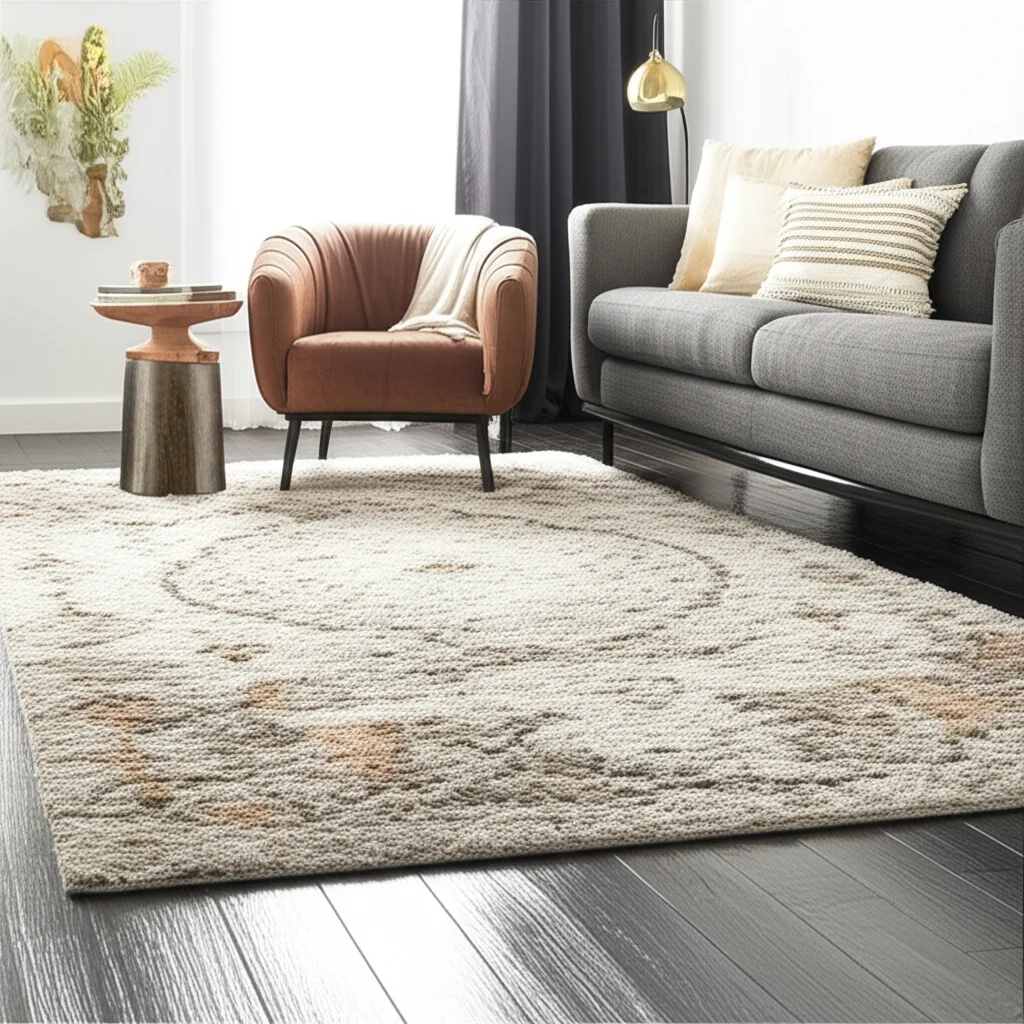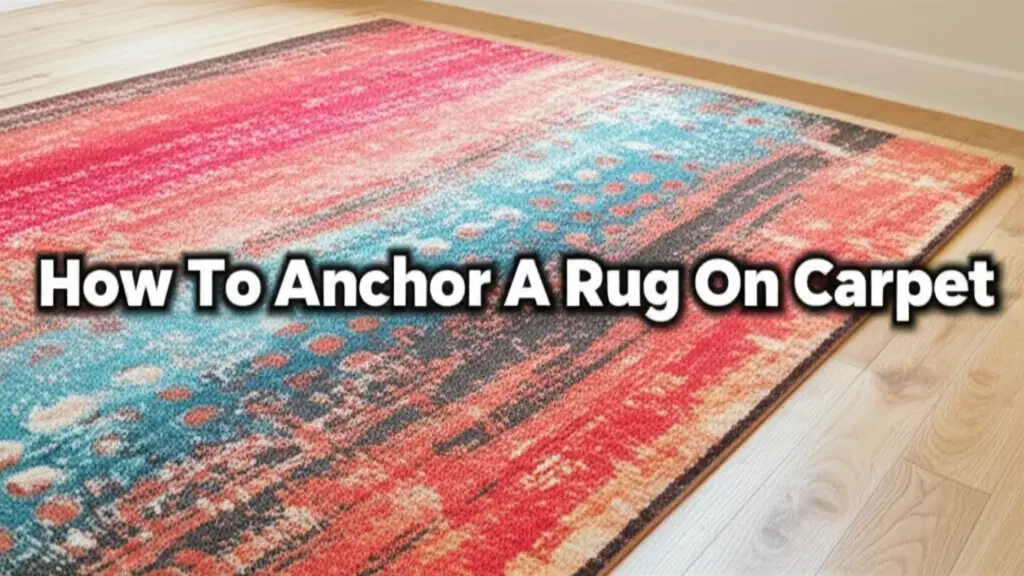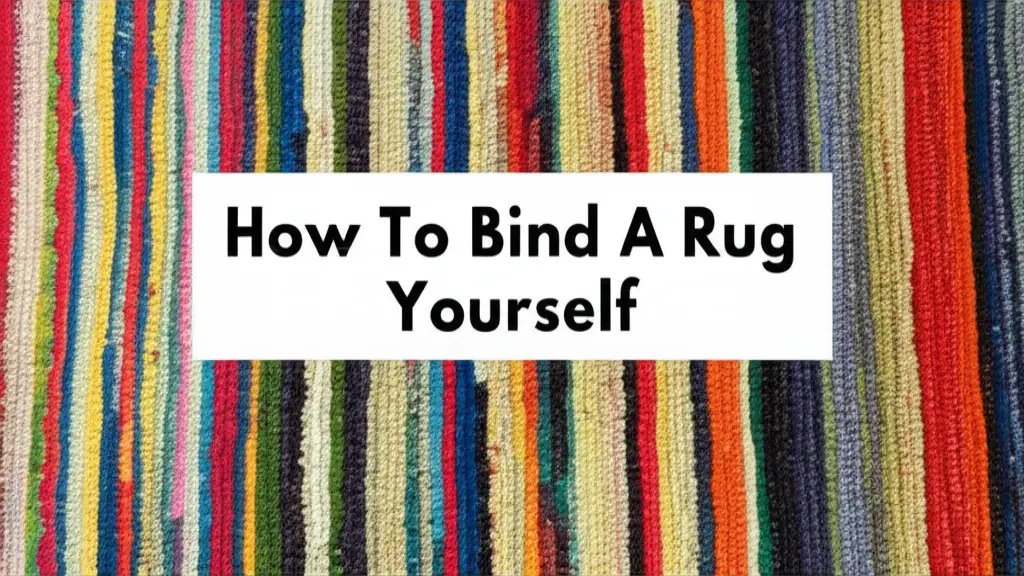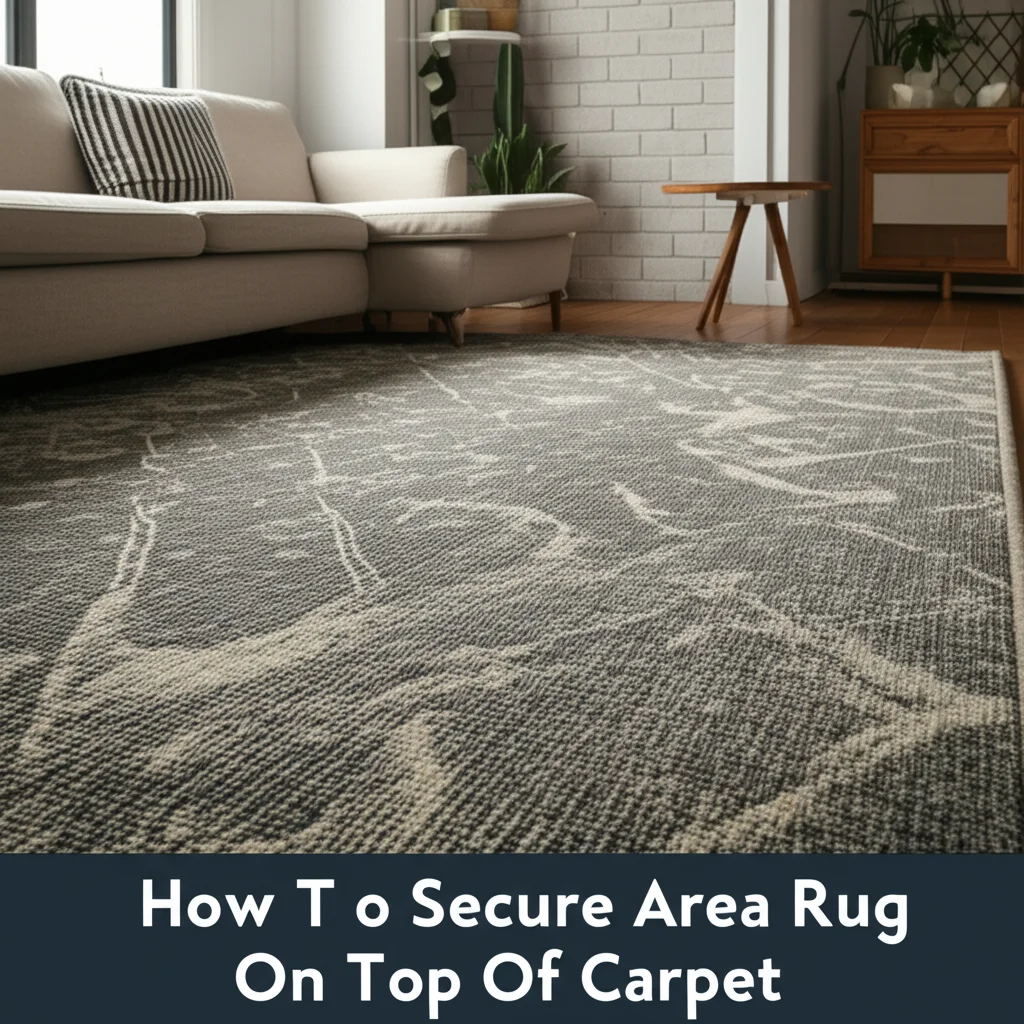· Todd Martin · Rugs · 10 min read
How To Attach Rug Pad To Rug
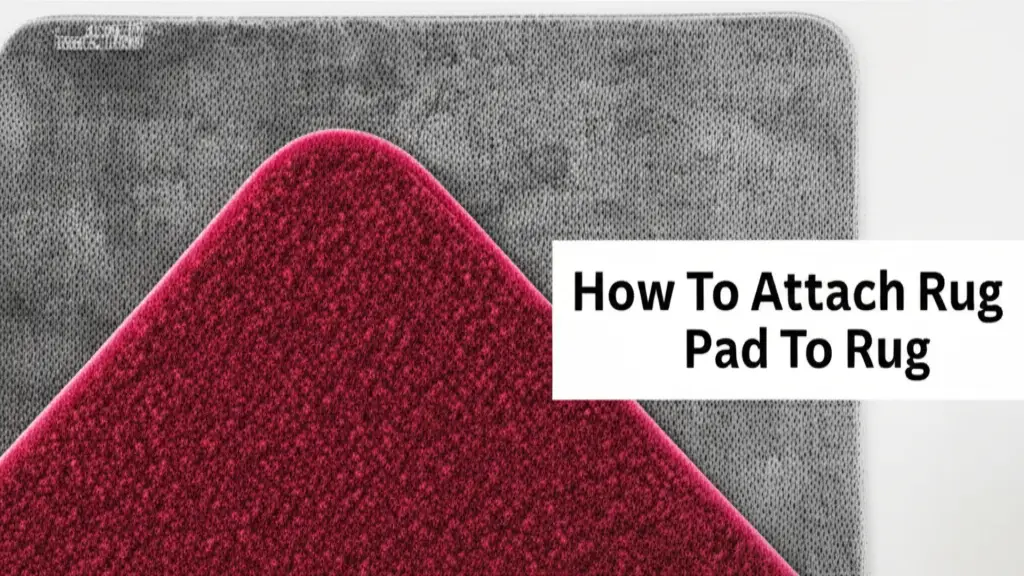
How To Attach Rug Pad To Rug: Complete Guide for Secure Installation
Are you tired of constantly readjusting your area rug after it slides out of place? The secret to a stable, non-slip rug lies in properly attaching a rug pad. Learning how to attach rug pad to rug isn’t just about preventing accidents—it’s about extending your rug’s lifespan, enhancing underfoot comfort, and protecting your valuable flooring.
Whether you’re dealing with hardwood floors, carpet, or tile, this comprehensive guide will walk you through everything you need to know about securing your rug pad for optimal performance and safety.
Key Takeaways
- Double-sided tape is the most common method to attach rug pads to rugs
- Different flooring types require specific rug pad attachment techniques
- Proper attachment prevents slipping, prolongs rug life, and enhances comfort
- Regular maintenance keeps the attachment system working effectively
- Various attachment methods exist for different rug and floor combinations
In short: To attach a rug pad to a rug, clean both surfaces, position the pad slightly smaller than the rug, use double-sided tape along the edges and corners of the pad, align the rug carefully over the pad, and press firmly to secure the attachment.
Why You Need to Properly Attach Your Rug Pad
Before diving into the how-to, let’s understand why proper attachment matters. A rug pad serves multiple functions beyond just preventing slips. When correctly attached, it creates a unified system that:
- Prevents dangerous slipping and tripping hazards
- Extends the life of your rug by reducing friction and wear
- Enhances comfort by providing cushioning underfoot
- Protects your flooring from scratches and dye transfer
- Improves air circulation, preventing mold and mildew
- Helps with sound absorption and insulation
Without proper attachment, your rug pad can bunch up, slide around, or create ripples in your rug—defeating its purpose entirely. The right attachment method depends on several factors including your flooring type, rug material, and pad type.
Common Problems When Rug Pads Aren’t Properly Attached
Many homeowners face frustrating issues when their rug pads aren’t securely attached:
- Constant readjustment of shifted rugs
- Tripping hazards from bunched-up corners
- Premature wear on rug fibers
- Damage to underlying flooring
- Reduced effectiveness of the pad’s cushioning
By following the correct attachment techniques, you’ll avoid these common pitfalls and maximize your rug pad’s performance.
Types of Rug Pads and Attachment Considerations
Before attaching your rug pad, it’s important to understand the different types available and how they influence your attachment method.
Non-Slip Rubber or PVC Rug Pads
These thin, grippy pads are designed primarily to prevent slipping on hard surfaces like hardwood, laminate, or tile.
Attachment considerations:
- Many have a natural grip that works without additional attachment methods
- May require double-sided tape in high-traffic areas
- Best choice when slip-resistance is your primary concern
Felt or Felt-Rubber Combination Pads
These thicker pads offer both cushioning and non-slip properties, making them ideal for most home applications.
Attachment considerations:
- The rubber side typically faces down toward the floor
- May require more secure attachment methods due to their weight
- Excellent for protecting hardwood floors while providing comfort
Memory Foam Rug Pads
Offering superior cushioning, these pads are perfect for areas where you stand for long periods.
Attachment considerations:
- Usually require more robust attachment methods
- May compress over time, affecting attachment
- Best for areas where comfort is paramount
Carpet-to-Carpet Rug Pads
Specially designed for placing rugs over carpeting, these pads use different technology than hard-floor pads.
Attachment considerations:
- Often use hook-and-loop or special gripping textures
- May require carpet tape or pins for secure installation
- Prevent both slipping and bunching on carpet surfaces
How to Attach Rug Pad to Rug on Hardwood Floors
Hardwood floors require special consideration to prevent both slipping and potential damage. Here’s the step-by-step process:
Materials You’ll Need
- Appropriate rug pad (slightly smaller than your rug)
- Double-sided carpet tape or rug tape
- Scissors
- Clean cloth and mild cleaner
- Measuring tape
Step-by-Step Instructions
Prepare the area: Clean both your hardwood floor and the underside of your rug to remove dust and debris that could interfere with adhesion.
Measure and cut the rug pad: Your pad should be 1-2 inches smaller than your rug on all sides to prevent it from showing and to allow the rug edges to make direct contact with the floor.
Apply double-sided tape: Run strips of carpet tape along the perimeter of the rug pad and in an “X” pattern across the center for larger pads.
Position the pad: Place the rug pad with the appropriate side down on your clean floor. For felt-rubber combination pads, the rubber side should face the floor.
Remove the tape backing: Peel off the top layer of the double-sided tape to expose the adhesive surface that will attach to the rug.
Align and lower the rug: Carefully position your rug above the pad and gently lower it, ensuring proper alignment on all sides.
Secure the attachment: Press firmly along the edges and across the surface of the rug to ensure good contact with the tape beneath.
Check for secure attachment: Gently tug at the corners and edges to confirm the rug and pad are properly attached.
For maximum protection of your hardwood floors, consider exploring how to clean a rug pad to maintain cleanliness and extend the life of both your pad and floors.
How to Attach Rug Pad to Rug on Carpet
Placing a rug over carpet presents unique challenges, as both surfaces already have grip. Here’s how to properly attach your rug pad in this situation:
Materials You’ll Need
- Carpet-to-carpet rug pad
- Carpet tape (specially designed for fabric-to-fabric adhesion)
- Rug anchors or pins (optional)
- Scissors
- Vacuum cleaner
Step-by-Step Instructions
Vacuum thoroughly: Clean both your carpet and the underside of your rug to remove any debris.
Select the right pad: Use a specialized carpet-to-carpet pad with hook-and-loop technology or rubberized mesh design.
Cut the pad to size: Ensure the pad is 1-2 inches smaller than your rug on all sides.
Apply carpet tape: Place strips of carpet tape along the edges of the rug pad.
Position the pad: Lay the pad on the carpet with the appropriate side facing up (follow manufacturer directions).
Remove tape backing: Peel off the protective layer from the tape.
Position the rug: Carefully align your rug over the pad and lower it gradually to avoid wrinkles.
Press firmly: Apply pressure along the taped areas to ensure good adhesion.
Consider additional anchoring: For high-traffic areas or larger rugs, consider using rug anchors or pins at the corners for extra security.
For more detailed guidance on this specific scenario, check out how to anchor an area rug over carpet.
Alternative Methods for Attaching Rug Pads
While double-sided tape is the most common method, there are several other effective techniques depending on your specific situation:
Rug Grippers or Corners
These small adhesive pads are placed at the corners of your rug to prevent slipping.
Best for: Lighter rugs on hard surfaces, temporary installations, or when you want to avoid using tape across the entire perimeter.
Velcro Strips
Hook-and-loop fasteners provide strong attachment while allowing for easy removal when needed.
Best for: Frequently moved rugs or situations where you need to periodically lift the rug for cleaning.
Rug-to-Rug Tape
This specialized two-sided tape is designed specifically for fabric-to-fabric adhesion.
Best for: Attaching pads to the underside of rugs without risking damage to either material.
Non-Adhesive Methods
For delicate or valuable rugs where adhesives aren’t recommended:
- Clamping systems: Special clamps that hold the rug and pad together at the edges
- Sewing: Hand-stitching the pad to the rug at strategic points (for valuable rugs where preservation is critical)
- Weight solutions: Using specialized rug weights at corners (best for temporary solutions)
Special Considerations for Different Rug Types
Different rug materials require specific approaches to attachment:
Natural Fiber Rugs (Jute, Sisal, Seagrass)
These rugs often have more rigid backing and may require stronger attachment methods.
- Use wider strips of carpet tape for better grip
- Consider a specialized pad for jute rugs that accounts for their natural stiffness
- Avoid adhesives that might discolor natural fibers
Delicate or Antique Rugs
Valuable or fragile rugs require gentler attachment methods:
- Use non-adhesive clamping systems where possible
- Consider professional installation to avoid damage
- Use acid-free, archival-quality attachment products
Heavy Wool or Shag Rugs
These substantial rugs may require extra holding power:
- Use heavy-duty carpet tape rated for the weight
- Consider multiple attachment points
- For shag rugs, ensure attachment methods won’t damage the longer fibers by learning how to clean a shag area rug properly
Troubleshooting Common Attachment Problems
Even with careful installation, you might encounter some issues. Here’s how to solve them:
Rug Pad Shifting Under the Rug
Possible causes:
- Insufficient tape application
- Incorrect pad size
- Smooth pad surface not gripping floor
Solutions:
- Add additional tape along the center and edges
- Replace with correct-sized pad (1-2 inches smaller than rug)
- Switch to a pad with better grip characteristics
Bunching or Rippling
Possible causes:
- Uneven attachment
- Pad too thick for the rug
- Humidity changes affecting materials
Solutions:
- Reattach with careful smoothing during installation
- Choose a thinner pad appropriate for your rug type
- Allow rug and pad to acclimate to your home’s environment before attaching
Adhesive Failure
Possible causes:
- Low-quality tape
- Dirty surfaces during installation
- Extreme temperature or humidity
Solutions:
- Use premium carpet tape designed for your floor type
- Thoroughly clean surfaces before installation
- Consider alternative attachment methods for extreme environments
Maintenance of Rug Pad Attachments
To ensure long-lasting attachment between your rug and pad:
Perform regular inspections: Check corners and edges monthly for any separation.
Clean properly: Follow appropriate cleaning methods for your specific rug and pad materials by learning how to secure area rug on top of carpet and other floor types.
Re-attach as needed: Don’t wait for complete separation—address minor detachment immediately.
Replace tape seasonally: In areas with significant temperature and humidity fluctuations, consider replacing tape every 6-12 months.
Professional cleaning considerations: Inform professional cleaners about your attachment method before service.
FAQ: Common Questions About Attaching Rug Pads
How do you put a rug pad on carpet?
Use a specialized carpet-to-carpet rug pad positioned between your area rug and underlying carpet. Secure it using carpet tape along the edges and corners, ensuring both surfaces are clean. For extra security in high-traffic areas, consider adding rug anchors at the corners.
How do you attach a rug to a rug?
To layer rugs, use purpose-made rug-to-rug tape along the perimeter of the smaller top rug. This specialized double-sided tape creates strong fabric-to-fabric adhesion without damaging fibers. Alternatively, consider using non-adhesive velcro strips that allow for easier repositioning.
How to anchor an area rug over carpet?
The most effective method is using a combination of carpet-to-carpet rug pad, carpet tape, and rug anchors. Place the pad between the rugs, apply tape along the edges, and insert anchors at corners and high-traffic areas. This creates a stable, layered system that prevents shifting.
Do you put a rug pad under a rug on carpet?
Yes, you should use a rug pad even on carpeted floors. However, you’ll need a specialized carpet-to-carpet pad rather than a standard hard-floor pad. These pads prevent bunching, slipping, and premature wear while adding stability to your area rug on carpeted surfaces.
Which side of rug pad goes down?
For felt-rubber combination pads, the rubber side should face the floor while the felt side faces the rug. For single-material pads, follow the manufacturer’s instructions—usually the rougher, more textured side faces the floor to create grip. When in doubt, check the product packaging for guidance.
How do I keep my rug from slipping on a rug pad?
Ensure proper attachment between rug and pad using quality double-sided tape. Choose the correct pad type for your specific flooring. Make sure the pad is 1-2 inches smaller than your rug on all sides, and periodically check and replace tape as needed to maintain secure attachment.
Can I use a regular rug pad on carpet?
No, regular hard-floor rug pads aren’t effective on carpet. You need a specialized carpet-to-carpet pad with either hook-and-loop technology or a rubberized mesh design specifically engineered to prevent movement between fabric surfaces. Using the wrong pad type will result in bunching and shifting.
Final Thoughts
Properly attaching your rug pad to your rug creates a secure, unified system that enhances safety, comfort, and longevity for both your rug and flooring. By following the appropriate technique for your specific flooring type and rug material, you’ll eliminate the frustration of constantly readjusting slipped rugs while protecting your investment in quality floor coverings.
Remember that different situations call for different attachment methods—whether you’re securing a delicate Persian rug to hardwood floors or anchoring an area rug over carpet. Take the time to select the right materials and follow the proper steps for your unique scenario.
With proper attachment and regular maintenance, your rug and pad will work together seamlessly to provide years of beautiful, functional service in your home. No more sliding, bunching, or tripping—just the comfort and style you deserve from your carefully chosen floor coverings.


